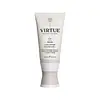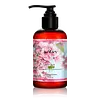Virtue 6-In-1 Styler Versus Wen Styling Creme
What's inside
What's inside
 Key Ingredients
Key Ingredients

 Benefits
Benefits

 Concerns
Concerns

 Ingredients Side-by-side
Ingredients Side-by-side

Water
Skin ConditioningCyclopentasiloxane
EmollientDimethicone
EmollientGlycerin
HumectantPhenyl Trimethicone
Skin ConditioningDimethiconol
EmollientKeratin
Skin ConditioningPanthenol
Skin ConditioningTocopherol
AntioxidantEthylhexylglycerin
Skin ConditioningPolyacrylamide
Maltodextrin/Vp Copolymer
Pvp
Emulsion StabilisingMaltodextrin
AbsorbentAmmonium Acryloyldimethyltaurate/Vp Copolymer
Parfum
MaskingOleth-10
EmulsifyingC13-14 Isoparaffin
EmollientOleth-20
CleansingLaureth-7
EmulsifyingPhenoxyethanol
PreservativeChlorphenesin
AntimicrobialCyclohexasiloxane
EmollientLimonene
PerfumingLinalool
PerfumingBenzyl Salicylate
PerfumingCitronellol
PerfumingCitral
PerfumingEugenol
PerfumingWater, Cyclopentasiloxane, Dimethicone, Glycerin, Phenyl Trimethicone, Dimethiconol, Keratin, Panthenol, Tocopherol, Ethylhexylglycerin, Polyacrylamide, Maltodextrin/Vp Copolymer, Pvp, Maltodextrin, Ammonium Acryloyldimethyltaurate/Vp Copolymer, Parfum, Oleth-10, C13-14 Isoparaffin, Oleth-20, Laureth-7, Phenoxyethanol, Chlorphenesin, Cyclohexasiloxane, Limonene, Linalool, Benzyl Salicylate, Citronellol, Citral, Eugenol
Water
Skin ConditioningPropylene Glycol
HumectantCyclopentasiloxane
EmollientCyclotetrasiloxane
EmollientPhenyl Trimethicone
Skin ConditioningDimethiconol
EmollientC13-14 Isoparaffin
EmollientPolyacrylamide
Withania Somnifera Extract
Skin ConditioningAnnona Cherimola Fruit Extract
Skin ConditioningPalmitoyl Olive Leaf Extract
AntioxidantVanilla Bahiana Fruit Extract
EmollientHyacinthus Orientalis Extract
Skin ConditioningOrchid Extract
Skin ConditioningSantalum Album Wood Extract
PerfumingCitrus Aurantium Dulcis Peel Oil
MaskingAloe Barbadensis Leaf Juice
Skin ConditioningRosmarinus Officinalis Leaf Extract
AntimicrobialPunica Granatum Extract
AstringentActinidia Chinensis Fruit Extract
EmollientMalpighia Emarginata Fruit Extract
Skin ConditioningChamomilla Recutita Flower
Skin ConditioningMichelia Alba Flower Extract
Skin ConditioningLaminaria Digitata Extract
Skin ProtectingCamellia Sinensis Leaf Extract
AntimicrobialMelaleuca Alternifolia Leaf Extract
PerfumingRoe Extract
Skin ConditioningJuglans Nigra Leaf Extract
AstringentPanthenol
Skin ConditioningPalmitoyl Tripeptide-1
Skin ConditioningPalmitoyl Tetrapeptide-7
Skin ConditioningValine
MaskingThreonine
Proline
Skin ConditioningIsoleucine
Skin ConditioningPhenylalanine
MaskingHistidine
HumectantAlanine
MaskingSerine
MaskingArginine
MaskingAspartic Acid
MaskingGlycine
BufferingGlycerin
HumectantPCA
HumectantSodium Lactate
BufferingSodium PCA
HumectantLaureth-7
EmulsifyingPolysorbate 20
EmulsifyingButylene Glycol
HumectantCarbomer
Emulsion StabilisingPEG-40 Hydrogenated Castor Oil
EmulsifyingTrideceth-9
EmulsifyingSodium Benzoate
MaskingPotassium Sorbate
PreservativeCitric Acid
BufferingBisabolol
MaskingPhenoxyethanol
PreservativeEthylhexylglycerin
Skin ConditioningParfum
MaskingWater, Propylene Glycol, Cyclopentasiloxane, Cyclotetrasiloxane, Phenyl Trimethicone, Dimethiconol, C13-14 Isoparaffin, Polyacrylamide, Withania Somnifera Extract, Annona Cherimola Fruit Extract, Palmitoyl Olive Leaf Extract, Vanilla Bahiana Fruit Extract, Hyacinthus Orientalis Extract, Orchid Extract, Santalum Album Wood Extract, Citrus Aurantium Dulcis Peel Oil, Aloe Barbadensis Leaf Juice, Rosmarinus Officinalis Leaf Extract, Punica Granatum Extract, Actinidia Chinensis Fruit Extract, Malpighia Emarginata Fruit Extract, Chamomilla Recutita Flower, Michelia Alba Flower Extract, Laminaria Digitata Extract, Camellia Sinensis Leaf Extract, Melaleuca Alternifolia Leaf Extract, Roe Extract, Juglans Nigra Leaf Extract, Panthenol, Palmitoyl Tripeptide-1, Palmitoyl Tetrapeptide-7, Valine, Threonine, Proline, Isoleucine, Phenylalanine, Histidine, Alanine, Serine, Arginine, Aspartic Acid, Glycine, Glycerin, PCA, Sodium Lactate, Sodium PCA, Laureth-7, Polysorbate 20, Butylene Glycol, Carbomer, PEG-40 Hydrogenated Castor Oil, Trideceth-9, Sodium Benzoate, Potassium Sorbate, Citric Acid, Bisabolol, Phenoxyethanol, Ethylhexylglycerin, Parfum
Ingredients Explained
These ingredients are found in both products.
Ingredients higher up in an ingredient list are typically present in a larger amount.
This ingredient is also known as "C13-14 Isoalkane".
C13-14 Isoparaffin is created from petroleum-based mineral oils. It is an emollient and helps thicken a product.
As an emollient, it helps keep the skin soft and smooth by creating a barrier on top. This barrier traps moisture in, keeping the skin hydrated.
C13-14 Isoparaffin may not be fungal-acne safe.
Learn more about C13-14 IsoparaffinCyclopentasiloxane, or D5, is a silicone used to improve texture of products and trap moisture.
D5 is considered lightweight and volatile. Volatile means it evaporates quickly after application. Once evaporated, D5 leaves a thin barrier that helps keep skin hydrated.
It is also an emollient. Emollients help soften the skin and prevent water loss. Silicones create a silky texture in products. D5 helps other ingredients become more spreadable.
Studies show D5 is safe to use in skincare products. We recommend speaking with a skincare professional if you have concerns.
Learn more about CyclopentasiloxaneDimethiconol is a silicone that resembles the popular dimethicone. Like other silicones, it is an emollient. Emollients create a thin film on skin to prevent moisture from escaping.
This ingredient helps to create a silky texture and improve spreadability. Due to its high molecular weight and thickness, it is often combined with cyclopentasiloxane.
Ethylhexylglycerin (we can't pronounce this either) is commonly used as a preservative and skin softener. It is derived from glyceryl.
You might see Ethylhexylglycerin often paired with other preservatives such as phenoxyethanol. Ethylhexylglycerin has been found to increase the effectiveness of these other preservatives.
Glycerin is already naturally found in your skin. It helps moisturize and protect your skin.
A study from 2016 found glycerin to be more effective as a humectant than AHAs and hyaluronic acid.
As a humectant, it helps the skin stay hydrated by pulling moisture to your skin. The low molecular weight of glycerin allows it to pull moisture into the deeper layers of your skin.
Hydrated skin improves your skin barrier; Your skin barrier helps protect against irritants and bacteria.
Glycerin has also been found to have antimicrobial and antiviral properties. Due to these properties, glycerin is often used in wound and burn treatments.
In cosmetics, glycerin is usually derived from plants such as soybean or palm. However, it can also be sourced from animals, such as tallow or animal fat.
This ingredient is organic, colorless, odorless, and non-toxic.
Glycerin is the name for this ingredient in American English. British English uses Glycerol/Glycerine.
Learn more about GlycerinLaureth-7 is created by the ethoxylation of lauryl alcohol using ethylene oxide. Lauryl alcohol is a fatty alcohol with hydrating properties.
This ingredient is an emulsifier and cleansing ingredient. As an emulsifier, it is used to prevent ingredients from separating. It also helps cleanse the skin by gathering dirt, oil, and pollutants to be rinsed away.
Panthenol is a common ingredient that helps hydrate and soothe the skin. It is found naturally in our skin and hair.
There are two forms of panthenol: D and L.
D-panthenol is also known as dexpanthenol. Most cosmetics use dexpanthenol or a mixture of D and L-panthenol.
Panthenol is famous due to its ability to go deeper into the skin's layers. Using this ingredient has numerous pros (and no cons):
Like hyaluronic acid, panthenol is a humectant. Humectants are able to bind and hold large amounts of water to keep skin hydrated.
This ingredient works well for wound healing. It works by increasing tissue in the wound and helps close open wounds.
Once oxidized, panthenol converts to pantothenic acid. Panthothenic acid is found in all living cells.
This ingredient is also referred to as pro-vitamin B5.
Learn more about PanthenolParfum is a catch-all term for an ingredient or more that is used to give a scent to products.
Also called "fragrance", this ingredient can be a blend of hundreds of chemicals or plant oils. This means every product with "fragrance" or "parfum" in the ingredients list is a different mixture.
For instance, Habanolide is a proprietary trade name for a specific aroma chemical. When used as a fragrance ingredient in cosmetics, most aroma chemicals fall under the broad labeling category of “FRAGRANCE” or “PARFUM” according to EU and US regulations.
The term 'parfum' or 'fragrance' is not regulated in many countries. In many cases, it is up to the brand to define this term.
For instance, many brands choose to label themselves as "fragrance-free" because they are not using synthetic fragrances. However, their products may still contain ingredients such as essential oils that are considered a fragrance by INCI standards.
One example is Calendula flower extract. Calendula is an essential oil that still imparts a scent or 'fragrance'.
Depending on the blend, the ingredients in the mixture can cause allergies and sensitivities on the skin. Some ingredients that are known EU allergens include linalool and citronellol.
Parfum can also be used to mask or cover an unpleasant scent.
The bottom line is: not all fragrances/parfum/ingredients are created equally. If you are worried about fragrances, we recommend taking a closer look at an ingredient. And of course, we always recommend speaking with a professional.
Learn more about ParfumPhenoxyethanol is a preservative that has germicide, antimicrobial, and aromatic properties. Studies show that phenoxyethanol can prevent microbial growth. By itself, it has a scent that is similar to that of a rose.
It's often used in formulations along with Caprylyl Glycol to preserve the shelf life of products.
Phenyl Trimethicone is a silicon-based polymer. It is derived from silica.
Phenyl Trimethicone is used as an emollient and prevents products from foaming.
As an emollient, it helps trap moisture in the skin. It is considered an occlusive.
Learn more about Phenyl TrimethiconePolyacrylamide is a synthetic polymer. It is used to stabilize products and bind ingredients. When hydrated, Polyacrylamide forms a soft gel.
Polyacrylamide is low-toxicity. If source properly, it is deemed safe to use in cosmetics.
It should be noted the precursor to Polyacrylamide is acrylamide. Acrylamide is a carcinogen. Most reputable sources of Polyacrylamide will screen for residual acrylamide to make sure the count is in a safe range. Acrylamide is not able to be absorbed through the skin.
We recommend speaking with a professional if you have concerns.
Learn more about PolyacrylamideWater. It's the most common cosmetic ingredient of all. You'll usually see it at the top of ingredient lists, meaning that it makes up the largest part of the product.
So why is it so popular? Water most often acts as a solvent - this means that it helps dissolve other ingredients into the formulation.
You'll also recognize water as that liquid we all need to stay alive. If you see this, drink a glass of water. Stay hydrated!
Learn more about Water